#20 April 1534
Text















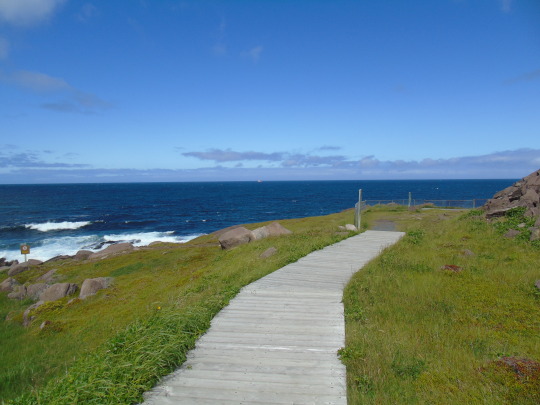


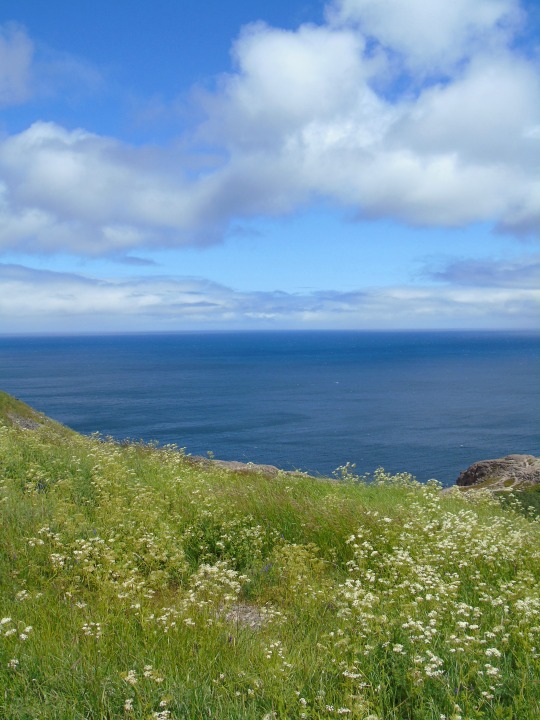











On April 20, 1534 Jacques Cartier began his first voyage to what is today the east coast of Canada, Newfoundland and Labrador.
#Green Bay#King's Point#Exploits River#Grand Falls-Windsor#summer 2015#iceberg#original photography#landscape#seascape#cityscape#St. John's#Gambo River#Stephenville#Atlantic Ocean#Cape Spear#Channel-Port aux Basques#Cape Ray#Newfoundland and Labrador#Canada#Deer Lake#Jacques Cartier#first voyage#white colonialism#20 April 1534#490th anniversary#Canadian history#travel#vacation#tourist attraction#landmark
2 notes
·
View notes
Text
Our Lady of Schier, Bavaria and Memorials of the Saints - 20 April
Feria DayThursday in the Second Week of Easter
Our Lady of Schier, Bavaria – 20 April:HERE:https://anastpaul.com/2021/04/20/our-lady-of-schier-bavaria-and-memorials-of-the-saints-20-april/
St Agnes of Montepulciano OP (1268-1317) Virgin, Sister and Abbess of the Order of Preachers, Mystic, known as “The Miracle Worker” – her body is incorrupt. Agnes was Beatified in 1534 and Canonised in 1726…
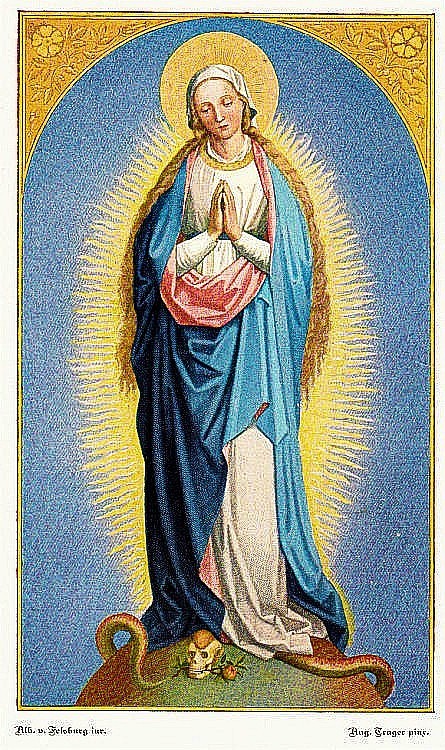
View On WordPress
#blhildegunofschonau#blsimonrinalducci#ourladyofschierbavaria#saints20april#stagnesofmontepulciano#stmarcellinusofembrun
2 notes
·
View notes
Photo
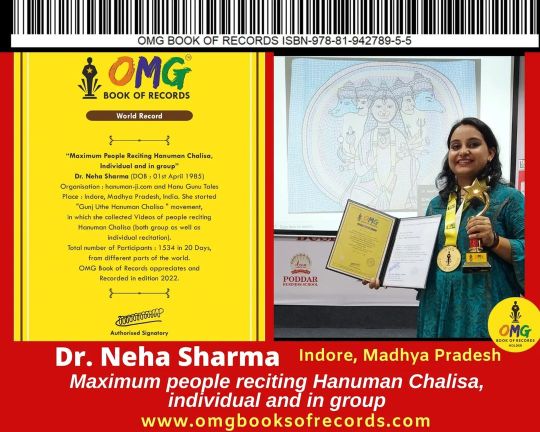
Congratulations... World Record WR-IN-2022-D9170 “Maximum people reciting Hanuman Chalisa, individual and in group” Dr. Neha Sharma (DOB : 01st April ) Organisation : hanuman-ji.com and Hanu Gunu Tales Place : Indore, Madhya Pradesh, India She started "Gunj Uthe Hanuman Chalisa " movement, in which she collected Videos of people reciting Hanuman Chalisa (both group as well as individual recitation) . Total number of Participants: 1534 in 20 Days, from different parts of the world. (at Indore, India) https://www.instagram.com/p/CjUJW69KjZF/?igshid=NGJjMDIxMWI=
0 notes
Text
O Kanata
In the beginning was the Word, and the Word was with God, and the Word was God.—JOHN 1:1
On behalf of King Francis I, Jacques Cartier sailed from France on April 20, 1534, with two ships and sixty-one sailors. They had all confessed their sins before sailing, and they prayed for the safety and success of their voyage. Their goal: to determine if a northwest passage existed that would link the…

View On WordPress
0 notes
Text
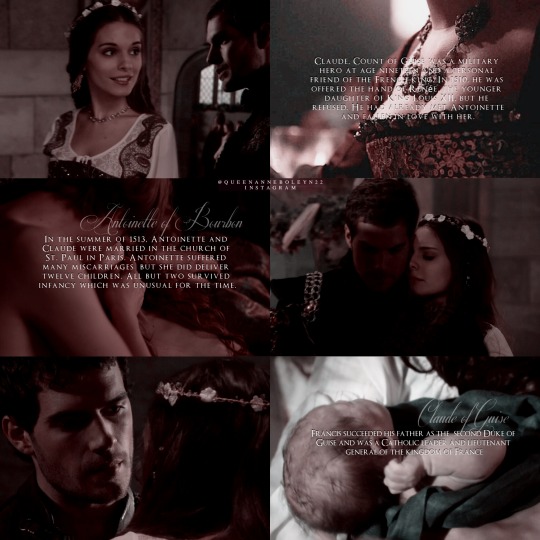
The Guise were a powerful French noble family with estates scattered across northern and eastern France. The main residence was in the Champagne region at Joinville. Claude, Count of Guise was a military hero at age nineteen and a personal friend of the French king. In 1510, he was offered the hand of Renée, the younger daughter of King Louis XII, but he refused. He had already met Antoinette and fallen in love with her. Antoinette came from a good family and had a moderate dowry. In the summer of 1513, Antoinette and Claude were married in the church of St. Paul in Paris. King Louis XII and his son-in-law, the future King Francis I attended the ceremony. Antoinette and Claude then went to live at Bar-le-Duc near Nancy. In September of 1515, Claude fought in the Battle of Marignano and nearly died.Antoinette of Bourbon was the formidable matriarch of the Guise family in sixteenth century France. She had many children who were instrumental in international politics as well as in religious life including her daughter Mary of Guise, Queen of Scotland. Her grand-daughter was Mary Queen of Scots. Antoinette lived to the ripe old age of eighty-nine and the reason we know so much about her is many of her letters survive to this day.
Antoinette of Bourbon-Vendôme was born December 25, 1493 at Chateau de Ham, Picardy, France. Her father was Francis, Count of Vendôme and her mother was Mary of Luxembourg, Countess of St. Pol.
Claude married Antoinette de Bourbon, daughter of François, Count of Vendôme and Marie de Luxembourg, on 9 June 1513; they had 12 children:
-Mary of Guise (1515–1560); married King James V of Scotland and had issue, including Mary, Queen of Scots
-Francis, Duke of Guise (1519–1563)
-Louise of Guise (10 January 1520, Bar-le-Duc – 18 October 1542); married Charles I, Duke of Arschot on 20 February 1541.
-Renée of Guise (2 September 1522 – 3 April 1602), Abbess of St. Pierre, Reims.
-Charles of Guise (1524–1574), Duke of Chevreuse, Archbishop of Reims, and Cardinal of Lorraine.
-Claude, Duke of Aumale (1526–1573)
-Louis I, Cardinal of Guise (1527–1578)
-Philip of Guise (3 September 1529, Joinville – 24 September 1529, Joinville)
-Peter of Guise (b. 3 April 1530, Joinville); died young.
-Antoinette of Guise (31 August 1531, Joinville – 6 March 1561, Joinville), Abbess of Faremoutier
-Francis of Guise (18 April 1534, Joinville – 6 March 1563), Grand Prior of the Order of Malta.
-René, Marquis of Elbeuf (1536–1566)
#the guise#de guise family#antoinette de bourbon#claude de guise#french history#16th century#antoinette x claude#historical#history#edit#history edit#graphic#perioddramaedit#a historic love#historical couple#peter of guise#philip of guise#rene of guise#marie de guise#louis i#renee of guise#charles de guise#bourbon#vendome#king louis xii#joinville#couples#henry cavill#caitlin stasey#the guises
53 notes
·
View notes
Text
Maria de Aragão, Queen of Portugal (Wife of King Manuel I of Portugal

Reign: 30 October 1500 – 7 March 1517
Maria of Aragon (29 June 1482 – 7 March 1517) was a Spanish infanta, and queen consort of Portugal as the second spouse of Portuguese King Manuel I.
Maria was born at Córdoba on 29 June 1482 as the third surviving daughter of Isabel I of Castile
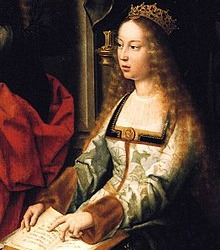
and Fernando II of Aragon (the Catholic monarchs).

She was the fourth of their five surviving children, and had a stillborn twin sister (though some other sources claim that the queen was pregnant with fraternal twins, and the stillborn baby was a boy). Like her sisters, she was given a thorough education, not only in household tasks but also in arithmetic, Latin, several other languages, history, philosophy and the classics.
As an infanta of Spain, her hand in marriage was important in European politics. Before her marriage to Manuel I of Portugal, her parents entertained the idea of marrying her to King James IV of Scotland.
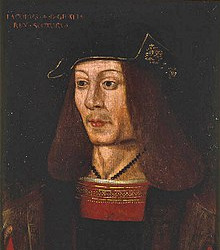
This was at a time when her younger sister Catherine's marriage to Arthur, Prince of Wales, was being planned.

Fernando and Isabel thought if Maria was Queen of Scotland, the two sisters could keep the peace between their husbands. These plans, however, came to nothing. Her eldest sister Isabel, Princess of Asturias, was the first wife of Manuel I, but her death in 1498 created a necessity for Manuel to remarry; Maria became the next bride of the Portuguese king, reaffirming dynastic links with Spanish royal houses.
Manuel and Maria were married in Alcácer do Sal on 30 October 1500, and was granted Viseu and Torres Vedras as her dower. She had 10 children, eight of whom reached adulthood, including King João III of Portugal, Holy Roman Empress Isabel, and Beatriz, Duchess of Savoy.
Queen Maria was described as pale and thin to her exterior, with a retiring chin, and had a very serious character to her personality. Despite the fact that she was queen during a famous time period in Portuguese history, when the Portuguese court was one of the richest in Europe, she did not play any significant part as an individual. Serious and pious, she devoted her time to sewing, pious devotion and supervising the education of her children in accordance with the principles of her parents. She maintained a close correspondence with her parents, got along well with her sister-in-law Isabel and the queen dowager Beatriz, and hosted a large court with both Spanish and Portuguese ladies-in-waiting. King Manuel appreciated her pious nature, treated her with respect and awarded her with expensive clothes and jewelry during her pregnancies.
Queen Maria was not described as politically active, though chronicles praised her for occasionally persuading her husband to an act of mercy. She was, however, somewhat involved in religious politics. She supported King Manuel's religious-imperial project, including the plan to conquer the Mamluk's realm, destroy Mecca and Medina and reconquer Christian holy places such as Jerusalem. She co-founded the Jeronimos Monastery in Lisbon.
During her life in Portugal, Maria was almost continually pregnant. Normally, she had but a few months pause between a delivery and her next pregnancy. This state of affairs resulted in an continual deterioration of her health and after the delivery of 1516, she was reportedly exhausted to a point that she was also temporarily mentally confused before she recuperated. She died in Lisbon on 7 March 1517, and was buried at the Jerónimos Monastery of Belém.

She died as a result of her last pregnancy.
In 1580, the dynastic links from the marriage led to a succession crisis in Portugal that made her grandson Philip II of Spain king of Portugal as Philip I of Portugal.

Her marriage with Manuel produced the following children:
João, Prince of Portugal (7 June 1502 - 11 June 1557), 55 years - Succeeded the throne as João III, King of Portugal.
Infanta Isabel (24 October 1503 - 1 May 1539), 35 years - Holy Roman Empress by marriage to Charles V, Holy Roman Emperor.
Infanta Beatriz (31 December 1504 - 8 January 1538), 33 years - Duchess of Savoy by marriage to Charles III, Duke of Savoy.
Infante Luís (3 March 1506 - 27 November 1555), 49 years - Duke of Beja. Unmarried but had illegitimate descendants, one of them being António, Prior of Crato, a claimant of the throne of Portugal in 1580; see: Portuguese succession crisis of 1580.
Infante Fernando (5 June 1507 - 7 November 1534), 27 years - Duke of Guarda. Married Guiomar Coutinho, 5th Countess of Marialva and 3rd Countess of Loulé (died 1534). No surviving issue.
Infante Afonso (23 April 1509 - 21 April 1540) 30 years - Cardinal of the Roman Catholic Church
Infante Henrique (31 January 1512 - 31 January 1580), 68 years - Cardinal of the Roman Catholic Church who succeeded his grandnephew, King Sebastião (Manuel I's great-grandson), as Cardinal Henrique, King of Portugal. His death triggered the Portuguese succession crisis of 1580.
Infanta Maria (3 February 1513) Died immediately after birth.
Infante Duarte (7 October 1515 - 20 September 1540), 24 years - Duke of Guimarães and great-grandfather of João IV of Portugal. Married Isabel of Bragança, daughter of Jaime, Duke of Bragança.
Infante António (9 September 1516) - Died immediately after birth.
11 notes
·
View notes
Text
Mary Tudor during the reign of Anne Boleyn - Part One 1533 - 1534
I wanted to do an accurate and detailed timeline as possible of everything that happened to Mary during the years Anne Boleyn was queen. Most know the basics, that she was mentally abused, harassed and depressed, but I wanted to show just how strong she was.
She endured the loss of her royal title and the death of her mother, but refused to passively accept the situation she was in. Despite being away from court she remained at the forefront of many people’s minds, and was considered a true threat to King Henry for her actions, some which verged on treason.
Some events are undated, so for some that have a general date I’ve put whereabouts it occurred. Others I have no idea, and have put them in a order that most makes sense. I’ve used many quotes from sources, and included some letters.
This got so long I had to split it into two parts, but here’s part one, 1533 - 1534, under the cut. I hope you find it interesting!
1533
22nd April – Henry writes to Princess Mary, telling her of his new marriage. She is at first sad, before pretending to be happy at the news. She writes a letter to the King, and when pressed for a verbal answer she “would not say a single word, referring instead to her letter.” Upon reading it, the King is well satisfied and praises her prudence.
She is forbidden to write to her mother. She begs to send a messenger who might testify that she sends no message except asking how the queen is, or show the King the letters first. He refuses.
? - Is unwell, and asks for permission for the Queen’s physician and apothecary to attend to her which the King grants. The Queen is allowed to send her messages.
27th May – Mary goes from Otford, where she has been staying nearly a year, to Beaulieu. While here in late June, she finds out her aunt Mary has died.
17th July – John Hussey is commanded to deliver Mary’s jewels to Frances Aylmer.
21st July – John Hussey tells Thomas Cromwell he spoke to Margaret Pole, who will make an inventory of the jewels. She will not deliver them unless obtain direct orders from King.
22nd August – Cromwell writes to Hussey desiring Mary’s plate.
28th August – Hussey writes to Cromwell. He has examined the clerk of Mary’s jewel house, and spoken to Margaret Pole. She says the plate is occupied at all seasons and cannot be spared.
7th September - Birth of Elizabeth.
? - Mary writes “a comforting letter to the Queen her mother, which is wonderfully good.”
? - Katherine replies back to Mary? [undated; c.late 1533 - beginning of 1534?]:
Daughter, I heard such tidings today that I do perceive, if it be true, the time is come that Almighty God will prove you; and I am very glad of it, for I trust He doth handle you with a good love. I beseech you agree to His pleasure with a merry heart; and be you sure that, without fail, he will not suffer you to perish if you beware to offend Him." I pray you, good daughter, to offer yourself to Him. If any pangs come to you, shrive yourself; first make you clean; take heed of His commandments, and keep them as near as He will give you grace to do, for then are you sure armed. And if this lady do come to you, as it is spoken, if she do bring you a letter from the King, I am sure in the self-same letter you shall be commanded what you shall do. Answer you with few words, obeying the King your father in everything, save only that you will not offend God and lose your own soul; and go no further with learning and disputation in the matter. And wheresoever and in whatsoever company you shall come, [obey] the King's commandments. Speak you few words, and meddle nothing. I will send you two books in Latin : one shall be De Vita Christi, with the declaration of the Gospels ; and the other the Epistles of Jerome, that he did write always to St. Paula and Eustochium; and in them I trust you shall see good things. And sometimes, for your recreation, use your virginals, or lute, if you have any. But one thing specially I desire you, for the love that you do owe unto God and unto me, to keep your heart with a chaste mind, and your body from all ill and wanton company, [not] thinking nor desiring any husband, for Christ's Passion; neither determine yourself to any manner of living until this troublesome time be past; for I dare make you sure that you shall see a very good end, and better than you can desire. I would God, good daughter, that you did know with how good a heart I do write this letter unto you. I never did one with a better, for I perceive very well that God loveth you. I beseech Him of His goodness to continue it; and if it fortune that you shall have nobody to be with you of your acquaintance, I think it best you keep your keys yourself, for howsoever it is, so shall be done as shall please them. And now you shall begin, and by likelihood I shall follow. I set not a rush by it ; for when they have done the uttermost they can, then I am sure of the amendment. I pray you recommend me unto my good lady of Salisbury, and pray her to have a good heart, for we never come to the kingdom of Heaven but by troubles. Daughter, wheresoever you become, take no pain to send for me, for if I may I will send to you.
By your loving mother, Katharine The Queen
20th September – Hussey tells Mary she is no longer a princess and is instead a bastard. She is astonished, and won’t accept unless he has direct writing from King. Her servants likewise agree a commandment given by John Hussey is not sufficient.
2nd October – Mary receives a letter stating the same from William Paulet, controller of the royal household. Disbelieving, she writes to the King:
“This morning my chamberlain came and informed me that he had received a letier from Sir Will. Paulet, controller of your House, to the effect that I should remove at once to Hertford castle. I desired to see the letter; in which was written "the lady Mary, the King's daughter," leaving out the name of Princess. Marvelled at this, thinking your Grace was not privy to it, not doubting but you take me for your lawful daughter, barn in true matrimony. If I agreed to the contrary I should offend God ; in all other things you shall find me an obedient daughter. From your manor of Beaulieu, 2 Oct.”
c. 9th October – The Earl of Essex [Henry Bourchier], the Earl of Oxford [John de Vere], Earl of Sussex [Robert Radcliffe] and Doctor Sampson go to Mary to tell her she is not to use the title of Princess. Mary makes them meet in front of her servants in case they put words in her mouth. She refuses to accept she is no longer a princess, bringing them nearly to tears. Mary writes to her father saying she would be obedient, but he cannot take away the titles God gave her. Her household is curtailed, with some such as her cofferer William Cholmeley, her cofferer entering Elizabeth’s household.
c.13th October – Mary moves from Beaulieu to Hertford castle.
c. late October/early November? – Mary hears she will be lady’s maid to Elizabeth. Asks the Spanish ambassador and lawyer, Eustace Chapuys for advice. Chapuys sends Mary a protest stating she would not do anything which was prejudicial to her.
13th December – Duke of Norfolk [Thomas Howard, Anne Boleyn’s uncle] goes to Mary, telling her father’s pleasure is for her to enter service of Elizabeth who he calls Princess of Wales. Mary says that “is a title which belongs to I by right, and no other.” She says her father’s proposals are strange and unfitting. Norfolk said he is not there to debate. Mary is allowed half an hour in her private chamber, which she uses to draw out a protest Chapuys gave her, saying if she is compelled to or persuaded by deceit to renounce her rights, enter a nunnery or marry against her will, no prejudice should occur. Margaret Pole, Countess of Salisbury offers to go with her, paying for her own expenses, but is refused. Mary asks for a years wages given to her servants and leaves for Hatfield with 2 attendants/maids of honour.
On the way, Doctor Foxe, her father’s almoner, tells her to stand firm for the love of God, otherwise the whole kingdom is in ruin and perdition.
Arriving at Hatfield, Norfolk asks her if she will pay her respect to the Princess. Mary says she “knows no Princess in England except herself.” Mary tells him to tell the king his daughter, the Princess of Wales, begs for his blessing. He refuses, so she tells him to go away and leave her alone. She retires to her chamber, the worst in the house, to cry.
c.26th December – Mary has now been deprived of her 2 maids of honour who accompanied her. She has only one common chamber maid, who doesn’t taste her food, however she supports her and sends letters to and from Chapuys and others. She has all her food in her chamber, and no good guard about her.
Anne Shelton, Anne Boleyn’s aunt, is in charge of the household. Lady Margaret Bryan, her old governess, mother of Elizabeth Carew is there, as well as William Cholmeley.
Mary refuses to pay court to Elizabeth unless compelled by sheer force. She can no longer be served meat before 11am like before. In her own house Mary “was much desirous to have meat immediately after she was ready in the morning, or else she should be in danger eftsoons to return to her said infirmity.” Unable to have this, now Mary wants her breakfast larger instead, so she can eat a little piece of meat at supper.
1534
c.5th? January – Henry visits Hatfield, sends orders ahead that Mary should not come to him. Cromwell, the treasurer [William Fitzwilliam] and captain of the guard [William Kingston] are sent to persuade Mary to renounce her title. She replies it is labour wasted to press her and has given a decided answer. She asks to see Henry and kiss his hand, but is refused. When Henry is leaving, she goes to a terrace at the top of the house, and bends on her knees with hands joined. Henry sees, bows to her and put his hand to his hat. The men with him do the same before leaving.
? January - Mary has been warned to be on her guard. She had been having breakfast in her chamber then going to table in public not eating or drinking; this is no longer allowed.
28th January - Chapuys sends to Mary “certain books of consolation, in which she takes great pleasure.”
He tells her there has been a a report in France about her marriage to the Marquis of Saluzzo, and that she must not consent to any marriage without her mother’s and Charles V’s consent.
29th January - The Duke of Norfolk and Brian Tuke visit Mary, presumably to persuade her to submit to the king.
? - Mary replies back to Chapuys, stating she will not marry without consent.
c.18?th February – Mary has no clothes and money, so sends a gentleman to the King. She also asks for her to attend mass at the church which adjoins the house but this is not allowed. Country people seeing her in the gallery salute her as princess and now she is kept closer. Nothing is done without the leave of Anne Shelton.
c.5th March – Anne Boleyn visits her daughter. She urgently solicits Mary to honour her as queen, saying it would be a means of reconciliation with the king, and she herself would intercede with him for her. Mary replies she “knew no Queen in England except her Mother, but if the said madam would do her that favour with her father she would be much obliged’.
16th March – Duke of Norfolk takes all her best clothes and jewels saying she is no longer princess and “her pride must be abated.” She continues to not pay court to Elizabeth unless forced – when walking together, she is always in front of or behind her when taken anywhere, instead of at her side. William Cholmeley is dismissed because he showed affection to her and did her some service.
23rd March - The First Act of Succession passed, declaring Mary a bastard and Elizabeth the heir.
25th March – A warrant is signed for new clothes for Mary.
26th March – Mary is forcibly put into a litter with Anne Shelton when she refuses to accompany Elizabeth to Eltham. She makes a public protest at the compulsion used.
c.? April – French ambassadors visit Elizabeth. Chapuys sends Mary a letter letting her know what has happened in Rome (Pope Clement has declared Henry and Catherine’s marriage valid), and that it is important she remain constant. Mary sends that she will do, and is better pleased with the said news then if they had sent her a million of gold.
18th April – Henry and Anne visit Eltham for 2 days with Richard Featherstone and more. Mary is commanded not to leave her chamber. One of Mary’s maids who refused to swear to the act of succession is locked up in her chamber and compelled to swear on threat of being taken to prison. Anne Shelton tells her if she were in the king’s place she would kick Mary out of the house for disobedience, and that the king said he would make her lose her head for violating the laws of his realm. Mary asks to see Richard Featherstone, her old tutor to confirm this. They speak in Latin so people don’t understand; Featherstone says “that is not good Latin”.
c.1st? May – The royal comptroller [William Paulet], and the Earl of Wiltshire [Thomas Boleyn] visit Mary to try and make her renounce title. She refuses.
c.10th? May – Mary’s maid who had been compelled to swear the act is dismissed, and has no where to go or a means to support herself. Mary is “much grieved for she was the only one in whom she had confidence, and by her means letters” from Chapuys and others. Her confessor is dismissed and replaced by another ‘Lutheran’. After her maid is dismissed, Henry sends a message begging if she would lay aside her obstinacy he would promise her before Michaelmas that she would have a royal title. She doesn’t believe him and refuses, as “God has not blinded her to confess her father and mother had lived in adultery and made her a bastard”.
7th June – Mary signs the letter of protestation Chapuys wrote and sent her before moving to Hatfield against her treatment. She declares she will not marry, enter a monastery or take any step without the consent of her mother. She diverts the guards around her to send it to Chapuys. Mary expects she will die. She believes “she could not better gain Paradise than by such a death.”
12th July – Chapuys warns Mary that William Paulet and Thomas Boleyn will visit her again tomorrow.
13th July – Paulet and Boleyn visit Mary for a second time. She is threatened to be shut up in her chamber.
27th July – King visits Eltham to see Elizabeth. He sends a gentlemen to make Mary withdraw to her chamber so she would not see him.
29th August – Hearing that the King intends the household to move to Hunsdon and for her to accompany Elizabeth, Mary sends to Chapuys 3 times in less then 24 hours to know what to do. He says he will go to Greenwich in disguise and see her pass, and to speak boldly but not go to extreme of being taken by force.
The comptroller promises she will not go after Elizabeth, however the litter is already there and Mary is compelled to go after. Instead, the comptroller allows her, as soon as she is mounted to go before or after the litter as she pleased. As soon as she on horseback she pushes forward, galloping ahead and arriving at Greenwich an hour before Elizabeth.
She enters the waiting royal barge and sits in the most honourable place. When they set sail, a disguised Chapuys watches on from the riverside.
? - Mary is diseased in her head and stomach, causing Anne Shelton to send for a Mr Michael who gave her pills. These cause her to be sick. One of Chapuys’s servants coming to see how she did is not allowed to see her. He warns her that mischief might arrive if anything happens to Mary.
2nd September – The royal physician William Butts visits Mary, who is at the beginning of her “old disease”. He sends for her mother’s physician and the apothecary.
? – The Queen’s physician and apothecary visit Mary. A messenger telling them to pay their respects to Elizabeth before Mary arrives late. They can only talk to Mary in the presence of other people, and only in English.
? - Mary sends a letter to Nicholas Carew.
? - Margaret Bryan gives her daughter, Elizabeth Carew’s, reply to Mary. Elizabeth desires Mary “for the passion of Christ in all things to follow the King otherwise she was utterly undone.’” The letter had been opened.
20th September – Anne Shelton asks Mary who she got to send her letter to Nicholas. She tells her it was her servant Randall Dodd; Margaret Bryan confirms she is telling the truth.
27th September – Henry has renewed his affections for a lady of the court who supports Mary.
c.10th October – Henry’s new mistress sends a letter to Mary telling her to be of good cheer, and that her troubles will soon come to an end, and when the opportunity occurs she will show herself a true and devoted servant.
c.20th October – Before Mary leaves the More for Richmond, she is visited by nearly all the gentlemen and ladies of court to Anne Boleyn’s annoyance. Chapuys tells her that as the King’s severity is abating she must take care not to give him any cause for offence and his protestation he made for her preserved her from any danger. She must make no difficulty about following Elizabeth this time but should say she is very glad in this to satisfy her father.
Mary goes to Richmond in a velvet litter, instead of the leather one used previously. At Richmond, to avoid having to follow Elizabeth’s litter, she chooses to go by water to see Chapuys watching by the riverside again.
In the evening she arranges with bargemen to row her along the bank. She sends a message to Chapuys to make sure he would not fail to be at his house nearby so she could see him.
c.21st October - She persuades the steersman to go down one side of the river. When she gets near Chapuys she orders the barge to be uncovered and goes on deck in the most conspicuous place so they could see each other.
c.22nd October – Anne Boleyn visits Richmond to see her daughter, with the Duke of Norfolk, Duke of Suffolk, and ladies. Mary refuses to leave her chamber until Anne Boleyn is gone so she won’t see her.
c.23rd? October – Mary informs Chapuys via letter that Anne is making those about her show her all the rudeness and annoyance they could.
c.17th November – Mary has a slight illness again. Anne Shelton continues to induce her to renounce her title of Princess. Duke of Norfolk has placed in the Tower one of Mary’s maids, accused of calling her princess. He wants to know who had informed Chapuys to wait by the riverside to see Mary pass.
c.19th December – The maid in the Tower has been released but forbidden to return to Mary.
Mary is ill, and the king sends his physician. They determine her illness is partly from ill treatment. The physician advises to send her to her mother, Henry refuses.
c. late December – Mary is told if she doesn’t renounce her title of princess she will go to the Tower or die. The people in her household desire her death, “by which they say the world will be at peace and they will be discharged of the pain and trouble she gives them.”
39 notes
·
View notes
Text

Today april 20, 1534 is a really important day for me. I am going to set sail on my first voyage.
1 note
·
View note
Text
20 April 1534
Today was our first day at sea. The weather was good, no clouds at the horizon and we are praying for a smooth sail. Its spring time and we can encounter storms any time. The crew is in high spirits. We have plenty of supplies: food, water, and of course red wine.
1 note
·
View note
Photo








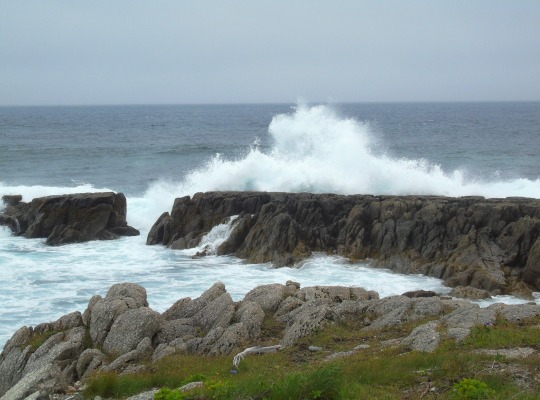

On April 20, 1534 Jacques Cartier began his first voyage to what is today the east coast of Canada, Newfoundland and Labrador.
#Green Bay#King's Point#Exploits River#Grand Falls-Windsor#summer 2015#iceberg#original photography#landscape#seascape#cityscape#St. John's#Gambo River#Stephenville#Atlantic Ocean#Cape Spear#Channel-Port aux Basques#Cape Ray#Newfoundland and Labrador#Canada#Deer Lake#Jacques Cartier#first voyage#white colonialism#20 April 1534#anniversary#Canadian history
0 notes
Text
Sant' Ignazio di Loyola Sacerdote

31 luglio
l primo scritto che racconta la vita, la vocazione e la missione di s. Ignazio, è stato redatto proprio da lui, in Italia è conosciuto come “Autobiografia”, ed egli racconta la sua chiamata e la sua missione, presentandosi in terza persona, per lo più designato con il nome di “pellegrino”; apparentemente è la descrizione di lunghi viaggi o di esperienze curiose e aneddotiche, ma in realtà è la descrizione di un pellegrinaggio spirituale ed interiore.
Il grande protagonista della Riforma cattolica nel XVI secolo, nacque ad Azpeitia un paese basco, nell’estate del 1491, il suo nome era Iñigo Lopez de Loyola, settimo ed ultimo figlio maschio di Beltran Ibañez de Oñaz e di Marina Sanchez de Licona, genitori appartenenti al casato dei Loyola, uno dei più potenti della provincia di Guipúzcoa, che possedevano una fortezza padronale con vasti campi, prati e ferriere.
Iñigo perse la madre subito dopo la nascita, ed era destinato alla carriera sacerdotale secondo il modo di pensare dell’epoca, nell’infanzia ricevé per questo anche la tonsura.
Ma egli ben presto dimostrò di preferire la vita del cavaliere come già per due suoi fratelli; il padre prima di morire, nel 1506 lo mandò ad Arévalo in Castiglia, da don Juan Velázquez de Cuellar, ministro dei Beni del re Ferdinando il Cattolico, affinché ricevesse un’educazione adeguata; accompagnò don Juan come paggio, nelle cittadine dove si trasferiva la corte allora itinerante, acquisendo buone maniere che tanto influiranno sulla sua futura opera.
Nel 1515 Iñigo venne accusato di eccessi d’esuberanza e di misfatti accaduti durante il carnevale ad Azpeitia e insieme al fratello don Piero, subì un processo che non sfociò in sentenza, forse per l’intervento di alti personaggi; questo per comprendere che era di temperamento focoso, corteggiava le dame, si divertiva come i cavalieri dell’epoca.
Morto nel 1517 don Velázquez, il giovane Iñigo si trasferì presso don Antonio Manrique, duca di Najera e viceré di Navarra, al cui servizio si trovò a combattere varie volte, fra cui nell’assedio del castello di Pamplona ad opera dei francesi; era il 20 maggio 1521, quando una palla di cannone degli assedianti lo ferì ad una gamba.
Trasportato nella sua casa di Loyola, subì due dolorose operazioni alla gamba, che comunque rimase più corta dell’altra, costringendolo a zoppicare per tutta la vita.
Ma il Signore stava operando nel plasmare l’anima di quell’irrequieto giovane; durante la lunga convalescenza, non trovando in casa libri cavallereschi e poemi a lui graditi, prese a leggere, prima svogliatamente e poi con attenzione, due libri ingialliti fornitagli dalla cognata.
Si trattava della “Vita di Cristo” di Lodolfo Cartusiano e la “Leggenda Aurea” (vita di santi) di Jacopo da Varagine (1230-1298), dalla meditazione di queste letture, si convinse che l’unico vero Signore al quale si poteva dedicare la fedeltà di cavaliere era Gesù stesso.
Per iniziare questa sua conversione di vita, decise appena ristabilito, di andare pellegrino a Gerusalemme dove era certo, sarebbe stato illuminato sul suo futuro; partì nel febbraio 1522 da Loyola diretto a Barcellona, fermandosi all’abbazia benedettina di Monserrat dove fece una confessione generale, si spogliò degli abiti cavallereschi vestendo quelli di un povero e fece il primo passo verso una vita religiosa con il voto di castità perpetua.
Un’epidemia di peste, cosa ricorrente in quei tempi, gl’impedì di raggiungere Barcellona che ne era colpita, per cui si fermò nella cittadina di Manresa e per più di un anno condusse vita di preghiera e di penitenza; fu qui che vivendo poveramente presso il fiume Cardoner “ricevé una grande illuminazione”, sulla possibilità di fondare una Compagnia di consacrati e che lo trasformò completamente.
In una grotta dei dintorni, in piena solitudine prese a scrivere una serie di meditazioni e di norme, che successivamente rielaborate formarono i celebri “Esercizi Spirituali”, i quali costituiscono ancora oggi, la vera fonte di energia dei Gesuiti e dei loro allievi.
Arrivato nel 1523 a Barcellona, Iñigo di Loyola, invece di imbarcarsi per Gerusalemme s’imbarcò per Gaeta e da qui arrivò a Roma la Domenica delle Palme, fu ricevuto e benedetto dall’olandese Adriano VI, ultimo papa non italiano fino a Giovanni Paolo II.
Imbarcatosi a Venezia arrivò in Terrasanta visitando tutti i luoghi santificati dalla presenza di Gesù; avrebbe voluto rimanere lì ma il Superiore dei Francescani, responsabile apostolico dei Luoghi Santi, glielo proibì e quindi ritornò nel 1524 in Spagna.
Intuì che per svolgere adeguatamente l’apostolato, occorreva approfondire le sue scarse conoscenze teologiche, cominciando dalla base e a 33 anni prese a studiare grammatica latina a Barcellona e poi gli studi universitari ad Alcalà e a Salamanca.
Per delle incomprensioni ed equivoci, non poté completare gli studi in Spagna, per cui nel 1528 si trasferì a Parigi rimanendovi fino al 1535, ottenendo il dottorato in filosofia.
Ma già nel 1534 con i primi compagni, i giovani maestri Pietro Favre, Francesco Xavier, Lainez, Salmerón, Rodrigues, Bobadilla, fecero voto nella Cappella di Montmartre di vivere in povertà e castità, era il 15 agosto, inoltre promisero di recarsi a Gerusalemme e se ciò non fosse stato possibile, si sarebbero messi a disposizione del papa, che avrebbe deciso il loro genere di vita apostolica e il luogo dove esercitarla; nel contempo Iñigo latinizzò il suo nome in Ignazio, ricordando il santo vescovo martire s. Ignazio d’Antiochia.
A causa della guerra fra Venezia e i Turchi, il viaggio in Terrasanta sfumò, per cui si presentarono dal papa Paolo III (1534-1549), il quale disse: “Perché desiderate tanto andare a Gerusalemme? Per portare frutto nella Chiesa di Dio l’Italia è una buona Gerusalemme”; e tre anni dopo si cominciò ad inviare in tutta Europa e poi in Asia e altri Continenti, quelli che inizialmente furono chiamati “Preti Pellegrini” o “Preti Riformati” in seguito chiamati Gesuiti.
Ignazio di Loyola nel 1537 si trasferì in Italia prima a Bologna e poi a Venezia, dove fu ordinato sacerdote; insieme a due compagni si avvicinò a Roma e a 14 km a nord della città, in località ‘La Storta’ ebbe una visione che lo confermò nell’idea di fondare una “Compagnia” che portasse il nome di Gesù.
Il 27 settembre 1540 papa Polo III approvò la Compagnia di Gesù con la bolla “Regimini militantis Ecclesiae”.
L’8 aprile 1541 Ignazio fu eletto all’unanimità Preposito Generale e il 22 aprile fece con i suoi sei compagni, la professione nella Basilica di S. Paolo; nel 1544 padre Ignazio, divenuto l’apostolo di Roma, prese a redigere le “Costituzioni” del suo Ordine, completate nel 1550, mentre i suoi figli si sparpagliavano per il mondo.
Rimasto a Roma per volere del papa, coordinava l’attività dell’Ordine, nonostante soffrisse dolori lancinanti allo stomaco, dovuti ad una calcolosi biliare e a una cirrosi epatica mal curate, limitava a quattro ore il sonno per adempiere a tutti i suoi impegni e per dedicarsi alla preghiera e alla celebrazione della Messa.
Il male fu progressivo limitandolo man mano nelle attività, finché il 31 luglio 1556, il soldato di Cristo, morì in una modestissima camera della Casa situata vicina alla Cappella di Santa Maria della Strada a Roma.
Fu proclamato beato il 27 luglio 1609 da papa Paolo V e proclamato santo il 12 marzo 1622 da papa Gregorio XV.
Si completa la scheda sul Santo Fondatore, colonna della Chiesa e iniziatore di quella riforma coronata dal Concilio di Trento, con una panoramica di notizie sul suo Ordine, la “Compagnia di Gesù”.
Le “Costituzioni” redatte da s. Ignazio fissano lo spirito della Compagnia, essa è un Ordine di “chierici regolari” analogo a quelli sorti nello stesso periodo, ma accentuante anche nella denominazione scelta dal suo Fondatore, l’aspetto dell’azione militante al servizio della Chiesa.
La Compagnia adattò lo spirito del monachesimo, al necessario dinamismo di un apostolato da svolgersi in un mondo in rapida trasformazione spirituale e sociale, com’era quello del XVI secolo; alla stabilità della vita monastica sostituì una grande mobilità dei suoi membri, legati però a particolari obblighi di obbedienza ai superiori e al papa; alle preghiere del coro sostituì l’orazione mentale.
Considerò inoltre essenziale la preparazione e l’aggiornamento culturale dei suoi membri. È governata da un “Preposito generale”.
I gradi della formazione dei sacerdoti gesuiti, comprendono due anni di noviziato, gli aspiranti sono detti ‘scolastici’, gli studi approfonditi sono inframezzati dall’ordinazione sacerdotale (solitamente dopo il terzo anno di filosofia), il giovane gesuita verso i 30 anni diventa professo ed emette i tre voti solenni di povertà, castità e obbedienza, più in quarto voto di obbedienza speciale al papa; accanto ai ‘professi’ vi sono i “coadiutori spirituali” che emettono soltanto i tre voti semplici.
Non c’è un ramo femminile né un Terz’Ordine. La spiritualità della Compagnia si basa sugli ‘Esercizi Spirituali’ di s. Ignazio e si contraddistingue per l’abbandono alla volontà di Dio espresso nell’assoluta obbedienza ai superiori; in una profonda vita interiore alimentata da costanti pratiche spirituali, nella mortificazione dell’egoismo e dell’orgoglio; nello zelo apostolico; nella totale fedeltà alla Santa Sede.
I Gesuiti non possono possedere personalmente rendite fisse, consentite solo ai Collegi e alle Case di formazione; i professi fanno anche il voto speciale di non aspirare a cariche e dignità ecclesiastiche.
Come attività, in origine la Compagnia si presentava come un gruppo missionario a disposizione del pontefice e pronto a svolgere qualsiasi compito questi volesse affidargli per la “maggior gloria di Dio”.
Quindi svolsero attività prevalentemente itinerante, facendo fronte alle più urgenti necessità di predicazione, di catechesi, di cura di anime, di missioni speciali, di riforma del clero, operante nella Controriforma e nell’evangelizzazione dei nuovi Paesi (Oriente, Africa, America).
Nel 1547, s. Ignazio affidò alla sua Compagnia, un ministero inizialmente non previsto, quello dell’insegnamento, che diventò una delle attività principali dell’Ordine e uno dei principali strumenti della sua diffusione e della sua forza, lo testimoniano i prestigiosi Collegi sparsi per il mondo.
Alla morte di s. Ignazio, avvenuta come già detto nel 1556, la Compagnia contava già mille membri e nel 1615, con la guida dei vari Generali succedutisi era a 13.000 membri, diffondendosi in tutta Europa, subendo anche i primi martiri (Campion, Ogilvie, in Inghilterra).
Ma soprattutto ebbe un’attività missionaria di rilievo iniziata nel 1541 con s. Francesco Xavier, inviato in India e nel Giappone, dove i successivi gesuiti subirono come gli altri missionari, sanguinose persecuzioni.
Più duratura fu la loro opera in Cina con padre Matteo Ricci (1552-1610) e in America Meridionale, specie in Brasile, con le famose ‘riduzioni’. Più sfortunata fu l’opera dei Gesuiti in America Settentrionale, in cui furono martiri i santi Giovanni de Brebeuf, Isacco Jogues, Carlo Garnier e altri cinque missionari.
Col passare del tempo, nei secoli XVII e XVIII i Gesuiti con la loro accresciuta potenza furono al centro di dispute dottrinarie e di violenti conflitti politico-ecclesiatici, troppo lunghi e numerosi da descrivere in questa sede; che alimentarono l’odio di tanti movimenti antireligiosi e l’astio dei Domenicani, dei sovrani dell’epoca e dei parlamentari e governi di vari Stati.
Si arrivò così allo scioglimento prima negli Stati di Portogallo, Spagna, Napoli, Parma e Piacenza e infine sotto la pressione dei sovrani europei, anche allo scioglimento totale della Compagnia di Gesù nel 1773, da parte di papa Clemente XIV.
I Gesuiti però sopravvissero in Russia sotto la protezione dell’imperatrice Caterina II; nel 1814 papa Pio VII diede il via alla restaurazione della Compagnia.
Da allora i suoi membri sono stati sempre presenti nelle dispute morali, dottrinarie, filosofiche, teologiche e ideologiche, che hanno interessato la vita morale e istituzionale della società non solo cattolica.
Nel 1850 sorse la prestigiosa e diffusa rivista “La Civiltà Cattolica”, voce autorevole del pensiero della Compagnia; altre espulsioni si ebbero nel 1880 e 1901 interessanti molti Stati europei e sud americani.
Nell’annuario del 1966 i Gesuiti erano 36.000, divisi in 79 province nel mondo e 77 territori di missione. In una statistica aggiornata al 2002, la Compagnia di Gesù annovera tra i suoi figli 49 Santi di cui 34 martiri e 147 Beati di cui 139 martiri; a loro si aggiungono centinaia di Servi di Dio e Venerabili, avviati sulla strada di un riconoscimento ufficiale della loro santità o del loro martirio.
L’alto numero di martiri, testimonia la vocazione missionaria dei Gesuiti, votati all’affermazione della ‘maggior gloria di Dio’, nonostante i pericoli e le persecuzioni a cui sono andati incontro, sin dalla loro fondazione.
Autore: Antonio Borrelli
http://www.santiebeati.it/dettaglio/23800
0 notes
Text
We Are Shaped by What We Discover
We Are Shaped by What We Discover
In the beginning was the Word, and the Word was with God, and the Word was God.—JOHN 1:1
On behalf of King Francis I, Jacques Cartier sailed from France on April 20, 1534, with two ships and sixty-one sailors. They had all confessed their sins before sailing, and they prayed for the safety and success of their voyage. Their goal: to determine if a northwest passage existed that would link the…

View On WordPress
0 notes
Text
AP Grama Volunteer Notification 2020 - Apply Now

AP Grama Volunteer Job 2020: Here we provided completed information about the AP Grama Volunteer Notification 2020. All AP People are eligible to apply for AP Grama Volunteer Recruitment 2020. The Leader of CM YS Jagan Mohan Reddy guru stated new employment in Andhra Pradesh to Overcome From Unemployment status. This is biggest though over India. No one CM can think like this but Our AP CM Jagan Reddy Started. For More information about the AP Grama Volunteer Job 2020 and AP Grama Volunteer Check Eligibility and AP Grama Volunteer Documents Required | AP Grama Volunteer Important Dates.
AP Grama Volunteer Jobs Notification May 2020

AP Volunteer Recruitment Important Dates 2020:
1
Notification inviting applications
20-04-2020
2
Receipt of application
May 2020
3
Scrutiny of applications
May 2020
4
Interviews by Selection Committee
May 2020
5
Intimation letters to selected Volunteers
May 2020
6
Induction and Training Programme
May 2020
7
Positioning of volunteers
May 2020
AP Grama Volunteer Posts & Jobs Salary Details
Selected persons will get a pay scale of Rs. 8000/- per month.
Grama Volunteer Application Form Fee
Category
Application Fee
SC, ST, and BC (Non-Creamy Layer candidates), PH & Ex-ServiceMen
Nil
General Candidates
Nil
What Are The Documents Required To Apply AP Grama Volunteer Jobs 2020:
While applying for the AP Grama Volunteer Notification 2020, candidates must and should have to submit the below-mentioned documents.
Aadhar Card with the same Village Name
Date Of Birth as per SSC Certificate
School Study Certificate
Educational Qualification proofs
Community Certificate
Certificate Of Residence/ Nativity
Medical Certificate (PHC Candidates)
How Many vacancies are Released For AP Grama Volunteer Jobs 2020:
AP Districts and Villages Table For AP Grama Volunteer Notification
District Name
Total Villages
Anantapur
965
Chittoor
1523
East Godavari
1400
Guntur
729
Krishna
996
Kurnool
923
Prakasam
1094
Nellore
1192
Srikakulam
1815
Visakhapatnam
3280
Vizianagaram
1534
West Godavari
897
Y.S.R Kadapa
938
Following Are The Basic Requirements For Application./అప్లికేషన్ దరఖాస్తు కొరకు క్రింది అర్హతలు సరిచూసుకోగలరు:
Educational Qualifications/విద్యార్హతలు
a) 10th for Tribal areas/గిరిజన ప్రాంతాలకు 10 వ తరగతి
b) Inter for Rural areas/గ్రామీణ ప్రాంతాలకు ఇంటర్
c) Degree for Urban areas/పట్టణ ప్రాంతాలకు డిగ్రీ
Age should be 18-35 yrs as on 30.06.2020/30.06.2020 నాటికి వయస్సు 18-35 సంవత్సరాలు ఉండాలి
Applicant should be resident of the same Panchayat/దరఖాస్తుదారు అదే పంచాయతీకి నివాసి అయ్యి ఉండాలి
Integrated caste certificate for other than OC/ OC కానివారు కుల ధృవీకరణ పత్రాన్ని అందించాలి
Selection Process for AP Grama Volunteer Recruitment April 2020
Merit List
Document Verification
Interview
Selection of candidates will be based on the performance of candidates in the Interview. Candidates will be called by the Selection Committee consisting of MPDO/Tahsildar/EO. See the details notification in this regard.
How To Apply For AP Grama Volunteer Notification April 2020:
Click on below provided any on link
Then select checkbox Button and Click on I accepted.
Further, check Your eligible By providing your Place( Rural | Urban | Tribal) and enter your Date of birth as per the certificate and your highest qualification. Then press on Check Button
Enter your Adhara No and mobile no
You will receive an OTP.
Enter OTP in the specified place
Upload Scanned Photograph as per specifications mentioned in the application form.
Fill other details as per details mentioned in the application form.
Finally, Click on the Submit Button.
Note: Those how are applied/ not Applied candidates or Applied and Not Selected Candidates are also Eligible for This AP Grama Volunteer 2020 Notification.
AP Grama Volunteer Recruitment Jobs 2020 - Apply Online
Application Start From: May 2020 (Updated Soon)
Application link / Registration Link - Server 1 | Server 2 | Server 3 | Server 4 ( Updated Soon)
Application Ends From - Not Yet Released (Updated Soon)
More Updates:
AP Grama Volunteer Interview Process & Cut Off Marks & Syllabus 2020
AP Grama Volunteer 1st Interview Results | Selected Candidates List Aug 2020
If You Have Any Queries/ Suggestions / Doubts/ Complaints, Feel Free To Comment Below. MAIL US AT ANY TIME: [email protected] OUR TEAM WILL GIVE REPLY TO YOU AS SOON AS POSSIBLE.
More updates:
Read the full article
0 notes
Text
14th King of Portugal (5th of the Aviz Dynasty): King Manuel I of Portugal, “The Fortunate)

Reign: 25 October 1495 – 13 December 1521
Acclamation: 27 October 1495
Predecessor: João II
Manuel I (31 May 1469 in Alcochete – 13 December 1521 in Lisbon ), the Fortunate (o Venturoso, o Afortunado), King of Portugal, was the son of Fernando, Duke of Viseu,

by his wife, the Infanta Beatriz of Portugal.

His name is associated with a period of Portuguese history distinguished by significant achievements both in political affairs and in the arts. In spite of Portugal's small size and population in comparison to the great European land powers of France, Italy and even Spain, the classical Portuguese Armada was the largest in the world at the time. During Manuel's reign Portugal was able to acquire an overseas empire of vast proportions, the first in world history to reach global dimensions. The landmark symbol of the period was the Portuguese discovery of Brazil and South America in April 1500.

Manuel's mother was the granddaughter of King João I of Portugal,

whereas his father was the second surviving son of King Duarte of Portugal
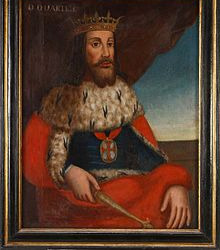
and the younger brother of King Afonso V of Portugal.
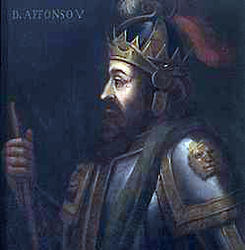
In 1495, Manuel succeeded his first cousin, King João II of Portugal, who was also his brother-in-law, as husband to Manuel's sister, Leonor of Viseu.
Manuel grew up amidst conspiracies of the Portuguese upper nobility against King João II. He was aware of many people being killed and exiled. His older brother Diogo, Duke of Viseu, was stabbed to death in 1484 by the king himself.
Manuel thus would have had every reason to worry when he received a royal order in 1493 to present himself to the king, but his fears were groundless: João II wanted to name him heir to the throne after the death of his son Prince Afonso and the failed attempts to legitimize Jorge, Duke of Coimbra, his illegitimate son. As a result of this stroke of luck, Manuel was nicknamed the Fortunate, and succeeded on João's death in 1495.

Imperial Growth
Manuel would prove a worthy successor to his cousin João II for his support of Portuguese exploration of the Atlantic Ocean and development of Portuguese commerce. During his reign, the following achievements were realized:
1498 – The discovery of a maritime route to India by Vasco da Gama

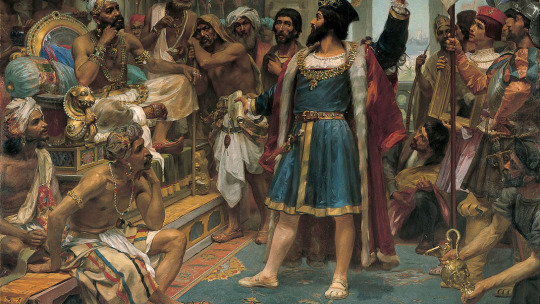
1500 – The discovery of Brazil by Pedro Álvares Cabral.
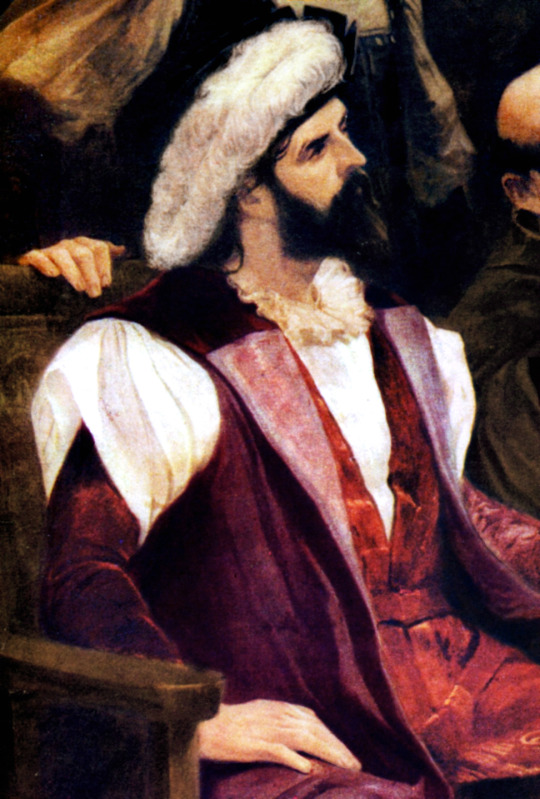
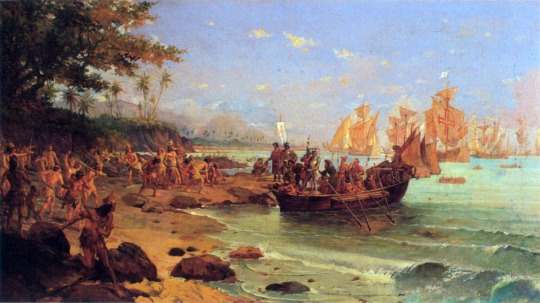
1501 – The discovery of Labrador by Gaspar

and Miguel Corte-Real.

1505 – The appointment of Francisco de Almeida as the first viceroy of India
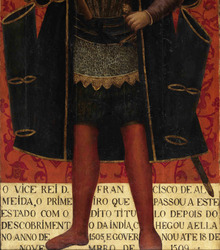
1503–1515 – The establishment of monopolies on maritime trade routes to the Indian Ocean and Persian Gulf by Afonso de Albuquerque, an admiral, for the benefit of Portugal.

The capture of Malacca in modern-day Malaysia in 1511 was the result of a plan by Manuel I to thwart the Muslim trade in the Indian Ocean by capturing Aden, blocking trade through Alexandria, capturing Ormuz to block trade through the Persian Gulf and Beirut, and capturing Malacca to control trade with China.
All these events made Portugal wealthy from foreign trade as it formally established a vast overseas empire. Manuel used the wealth to build a number of royal buildings (in the "Manueline" style) and to attract scientists and artists to his court. Commercial treaties and diplomatic alliances were forged with Ming dynasty of China and the Persian Safavid dynasty. Pope Leo X
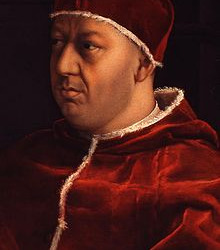
received a monumental embassy from Portugal during his reign designed to draw attention to Portugal's newly acquired riches to all of Europe.
Manueline Ordinations
In Manuel's reign, royal absolutism was the method of government. The Portuguese Cortes (the assembly of the kingdom) met only three times during his reign, always in Lisbon, the king's seat. He reformed the courts of justice and the municipal charters with the crown, modernizing taxes and the concepts of tributes and rights. During his reign, the laws in force in the kingdom of Portugal were recodified with the publication of the Manueline Ordinations.
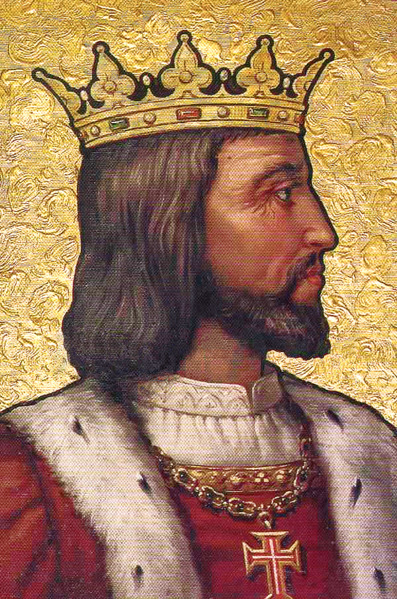
Religious policy
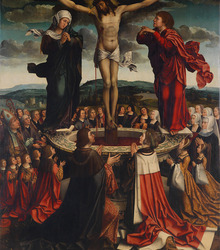
Manuel was a very religious man and invested a large amount of Portuguese income to send missionaries to the new colonies, among them Francisco Álvares, and sponsor the construction of religious buildings, such as the Monastery of Jerónimos.

Manuel also endeavoured to promote another crusade against the Turks.
The Jews in Portugal
His relationship with the Portuguese Jews started out well. At the outset of his reign, he released all the Jews who had been made captive during the reign of João II. Unfortunately for the Jews, he decided that he wanted to marry Infanta Isabel of Aragon,
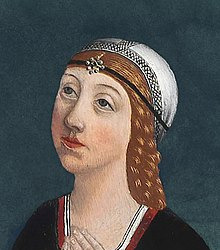
then heiress of the future united crown of Spain (and widow of his nephew Prince Afonso). Her parents Fernando and Isabel had expelled the Jews in 1492 and would never marry their daughter to the king of a country that still tolerated their presence. In the marriage contract, Manuel I agreed to persecute the Jews of Portugal.
In December 1496, it was decreed that all Jews either convert to Christianity or leave the country without their children. However, those expelled could only leave the country in ships specified by the king. When those who chose expulsion arrived at the port in Lisbon, they were met by clerics and soldiers who tried to use coercion and promises in order to baptize them and prevent them from leaving the country.
This period of time technically ended the presence of Jews in Portugal. Afterwards, all converted Jews and their descendants would be referred to as "New Christians", and they were given a grace period of thirty years in which no inquiries into their faith would be allowed; this was later extended to end in 1534.
During the course of the Lisbon massacre of 1506, people invaded the Jewish Quarter and murdered thousands of accused Jews; the leaders of the riot were executed by Manuel.
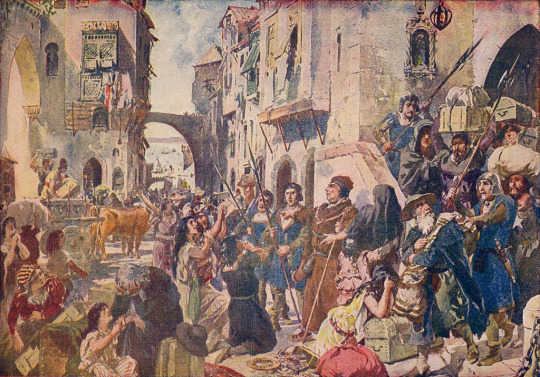
Isabel died in childbirth in 1498, thus putting a damper on Portuguese ambitions to rule in Spain, which various rulers had harbored since the reign of King Fernando I (1367–1383).

Manuel and Isabel's young son Miguel
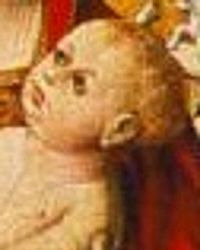
was for a period the heir apparent of Castile and Aragon, but his death in 1500 at the age of two years ended these ambitions.
Manuel's next wife, Maria of Aragon,

was his first wife's younger sister. Two of their sons later became kings of Portugal. Maria died in 1517 but the two sisters were survived by an older sister, Joana of Castile, who was born in 1479 and had married the Archduke Philip (Maximilian I's son) and had a son, Charles V who would eventually inherit Spain and the Habsburg possessions.
Manuel I was awarded the Golden Rose by Pope Julius II in 1506 and by Pope Leo X in 1514. Manuel I became the first individual to receive more than one Golden Rose after Emperor Sigismund von Luxembourg.
Manuel died of unknown causes on December 13 of 1521 at age 52. The Jerónimos Monastery in Lisbon houses Manuel's and Maria’s tombs. His son João succeeded him as king.


Negotiations for a marriage between Manuel and Elizabeth of York

in 1485 were halted by the death of Richard III of England.
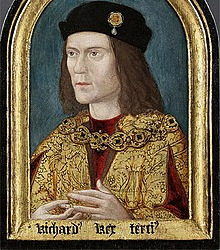
He went on to marry three times. His first wife was Isabel of Aragon, princess of Spain and widow of the previous Prince of Portugal Afonso. Next, he married another princess of Spain, Maria of Aragon (his first wife's sister), and then Leonor of Austria,
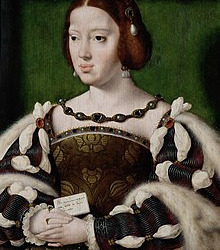
a niece of his first two wives, who married Francis I of France

after Manuel's death.
By Isabella of Aragon (2 October 1470 – 28 August 1498; married in 1497)
Miguel da Paz, Prince of Portugal (23 August 1498 - 19 July 1500) 1 year 10 months - Prince of Portugal, Prince of Asturias and heir to the crowns of Portugal, Castile, and Aragon.
By Maria of Aragon (19 June 1482 – 7 March 1517; married in 1500)
João, Prince of Portugal (7 June 1502 - 11 June 1557), 55 years - Succeeded the throne as João III, King of Portugal.
Infanta Isabel (24 October 1503 - 1 May 1539), 35 years - Holy Roman Empress by marriage to Charles V, Holy Roman Emperor.

Infanta Beatriz (31 December 1504 - 8 January 1538), 33 years - Duchess of Savoy by marriage to Charles III, Duke of Savoy.
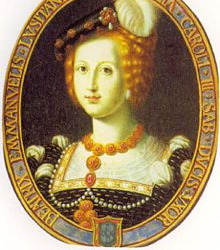
Infante Luís (3 March 1506 - 27 November 1555), 49 years - Duke of Beja. Unmarried but had illegitimate descendants, one of them being António, Prior of Crato, a claimant of the throne of Portugal in 1580; see: Portuguese succession crisis of 1580.
Infante Fernando (5 June 1507 - 7 November 1534), 27 years - Duke of Guarda. Married Guiomar Coutinho, 5th Countess of Marialva and 3rd Countess of Loulé (died 1534). No surviving issue.
Infante Afonso (23 April 1509 - 21 April 1540) 30 years - Cardinal of the Roman Catholic Church
Infante Henrique (31 January 1512 - 31 January 1580), 68 years - Cardinal of the Roman Catholic Church who succeeded his grandnephew, King Sebastião (Manuel I's great-grandson), as Cardinal Henrique, King of Portugal. His death triggered the Portuguese succession crisis of 1580.
Infanta Maria (3 February 1513) Died immediately after birth.
Infante Duarte (7 October 1515 - 20 September 1540), 24 years - Duke of Guimarães and great-grandfather of João IV of Portugal. Married Isabel of Bragança, daughter of Jaime, Duke of Bragança.
Infante António (9 September 1516) - Died immediately after birth.
By Leonor of Austria (15 November 1498 – 25 February 1558; married in 1518)
Infante Carlos (18 February 1520 - 14 April 1521), 1 year 1 month
Infanta Maria (18 June 1521 - 10 October 1577) 56 years - Unmarried
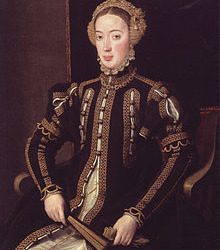
11 notes
·
View notes
Text
April 20, 1534
Today I finallly set sail for Newfoundlandfrom the port of Saint-Malo, I have been given two ships and sixty-one men to make this journey. I fear for the temper of the sea and my men’s lives. I am hopeful that the trip will be successful and we will find many riches.
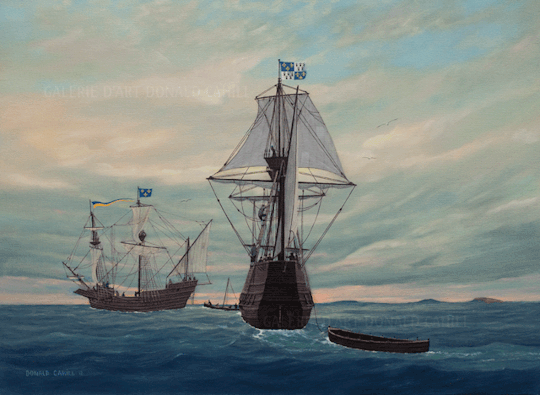
0 notes
Text
Mary’s abuse at Hatfield Part 1
23rd December 1533 - “When the Princess, who was taken off with only two attendants, had arrived where the bastard was, the Duke asked her whether she would not go and pay her respects to the Princess. She replied that she knew no other Princess in England except herself.”
17th January 1534 - “The King lately went to see his bastard daughter, who is 20 miles away, and the Princess with her. Accordingly, before arriving at the house he (King Henry) sent orders that she should not come to him. While the King was with his new daughter the Princess sent to ask leave to come and kiss his hand, but her request was not granted.”
11th February 1534 - “A gentleman told me that Anne had sent to her father's sister, (Anne Shelton) who has charge of the Princess, telling her not to allow her to use that title, and if she did otherwise, she must box her ears as a cursed bastard. The Princess has been used to breakfast in her chamber, and then come to table in public, but neither eat nor drink, but Anne has now ordered that she shall not be served in her chamber.”
21st February 1534 - “The Princess, finding herself nearly destitute of clothes and other necessaries, has been compelled to send a gentleman to the King. She ordered him to take money or the clothes, but not to accept any writing in which she was not entitled princess. He was also charged to ask leave for her to attend mass at the church which adjoins the house, but this was not allowed. As the country people seeing her walk along a gallery saluted her as their princess, she is now kept much closer, and nothing is done without the leave of the sister of Anne Boleyn's father, who has charge of her.”
17th March 1534 - “The Princess is similarly treated. Yesterday the duke of Norfolk went to her, and besides the ordinary threats took away her principal ornaments, saying that she was not princess and her pomp and pride must be abated. Besides this, one of the principal officers of the Bastard (Elizabeth) has been removed because he showed some affection to the Princess and did her some service.”
22nd April 1534 - “The King has lately been two days at the place where the Bastard is, and meanwhile the Princess has been commanded not to leave her chamber.”
“The aunt of the said Anne Boleyn, who has her in charge [...] said that if she were in the King's place, she would kick her out of the King's house for disobedience, and moreover the King himself has said that he would make her lose her head for violating the laws of his realm. The Princess, not having the means to disclose the last point to anyone, asked leave to speak privately to a physician there, who was formerly her preceptor and her physician, and this [was] not allowed her.”
14th May 1534 - “He (King Henry) said there must be someone about her who encouraged her and conveyed news from the Queen her mother. The said gouvernante, on consideration, could suspect no one except the maid of whom I lately wrote, who had been compelled to swear [the Oath of Succession], and on this suspicion she drove her out, and she has been for some days without anyone to go to or means to support herself. The Princess has been much grieved at this, for she was the only one in whom she had confidence, and by her means she had letters from me and others.”
All quotes from Eustace Chapuys letters.
2 notes
·
View notes